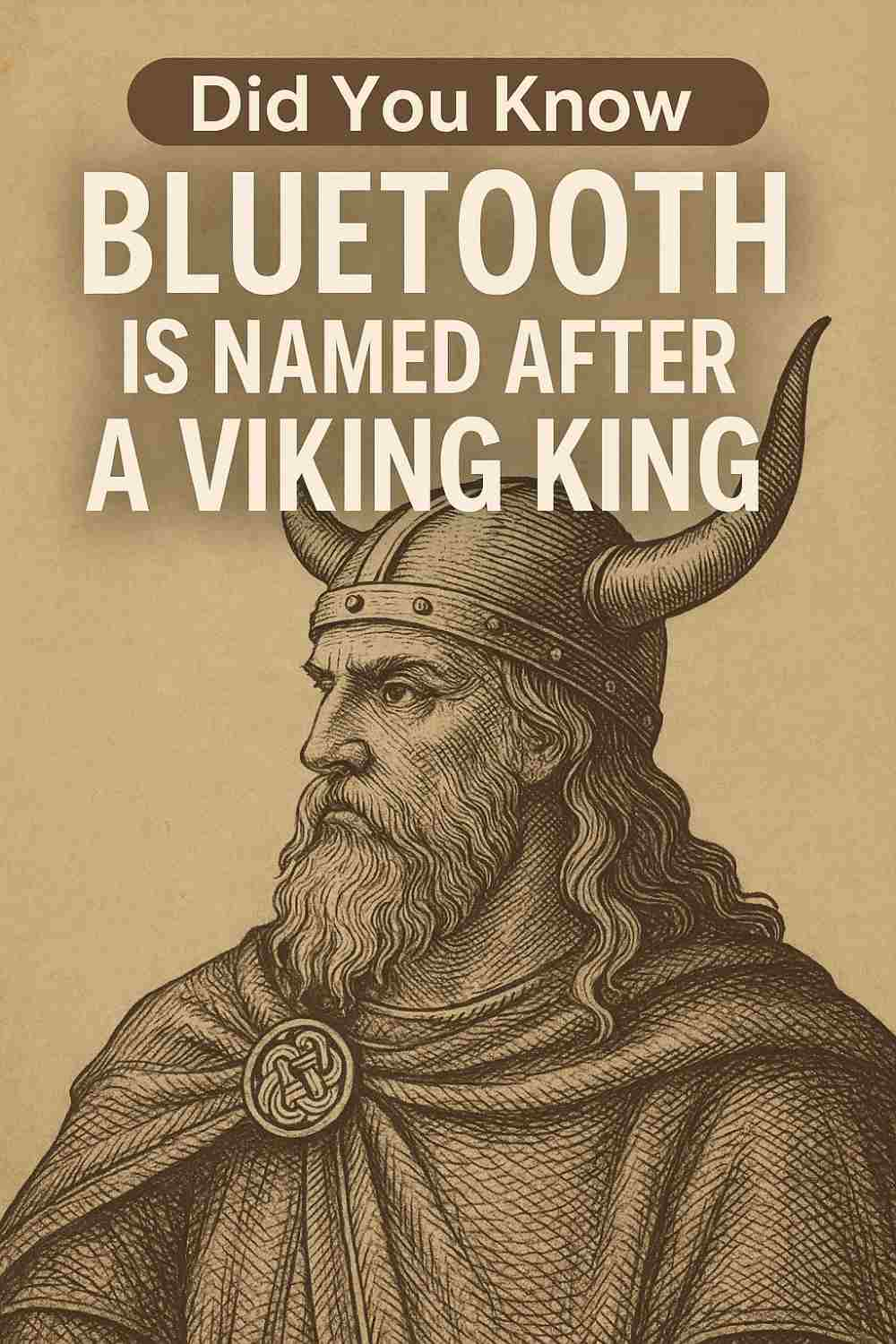 Ever stopped to wonder why your wireless earbuds, smartwatch, or car stereo connect via something called Bluetooth? It sounds more like a dental condition than a tech standard. But here’s the kicker—it’s actually named after a 10th-century Viking king. No, really. And no, this isn’t some marketing team’s fever dream. The story behind it is equal parts bizarre and brilliant.
Ever stopped to wonder why your wireless earbuds, smartwatch, or car stereo connect via something called Bluetooth? It sounds more like a dental condition than a tech standard. But here’s the kicker—it’s actually named after a 10th-century Viking king. No, really. And no, this isn’t some marketing team’s fever dream. The story behind it is equal parts bizarre and brilliant.
The Viking King Who United Scandinavia (and Inspired Your AirPods)
Harald “Bluetooth” Gormsson wasn’t just some footnote in history. This guy ruled Denmark and Norway in the late 900s, and he had a knack for bringing warring factions together. His nickname? Blátǫnn in Old Norse—literally “blue tooth.” Theories vary on why. Maybe he had a rotten tooth that looked suspiciously like a smurf’s molar. Maybe he loved blueberries a little too much. Or maybe, as some sagas suggest, it was just a mistranslation. Either way, the name stuck.
Fast forward a thousand years, and a bunch of engineers at Ericsson were scrambling to unify the chaos of wireless communication protocols. Jim Kardach, one of the key developers, happened to be reading a book about Vikings and saw a parallel: Harald united tribes; Bluetooth would unite devices. The temporary code name was so good, it never got replaced.
Why a Viking King Fits the Tech World Better Than You’d Think
Let’s be honest—tech naming conventions are usually either painfully literal (Wi-Fi = wireless fidelity, yawn) or Silicon Valley nonsense (X, Meta, Alphabet). Bluetooth bucks the trend. It’s got history. And weirdly, Harald’s legacy mirrors the tech’s purpose:
🔹 Unification – Harald brought Denmark and Norway under one rule. Bluetooth made your printer, phone, and headphones stop fighting like petty warlords.
🔹 Adaptability – Vikings were masters of reinvention. Bluetooth evolved from clunky headsets to smart homes and medical devices.
🔹 Short-range dominance – Vikings stuck close to coasts. Bluetooth? A 30-foot radius. Coincidence? Probably. But fun.
The Logo’s Hidden Viking Easter Egg
If you’ve ever squinted at the Bluetooth symbol, you might’ve noticed it looks like a B with wings. Nope—it’s actually a bind rune, merging Harald’s initials in Younger Futhark (the Viking alphabet). Hagall (ᚼ) and Bjarkan (ᛒ) combine into the now-iconic design. It’s a nerdy little tribute most people miss.
Why Bluetooth’s Quirky Origin Matters Today
In an era where tech feels increasingly sterile—all algorithms and no soul—Bluetooth’s backstory is a reminder that innovation doesn’t have to be soulless. It’s a mashup of history and utility, like naming a spaceship after a Greek god. And let’s face it: “Pairing via Harald Gormsson Protocol” would’ve been a harder sell than “Bluetooth.”
The Dark Side of Bluetooth’s Reign
Harald’s reign wasn’t all mead halls and harmony. He forcibly Christianized Denmark, which, uh, didn’t thrill the pagan crowd. Similarly, Bluetooth’s had its share of flaws:
🔸 Battery drain – Like a Viking raid on your phone’s power supply.
🔸 Spotty connections – Ever had your earbuds cut out mid-song? That’s the modern equivalent of a longship running aground.
🔸 Security holes – Hackers love Bluetooth vulnerabilities almost as much as Vikings loved poorly guarded monasteries.
What Harald Would Think of Modern Bluetooth
Picture it: a bearded king, baffled by someone explaining that his nickname now connects refrigerators to Spotify. He’d either be honored or demand royalties. Probably both.
Final Thought: Embrace the Weird
Next time you pair your devices, spare a thought for Harald. In a world obsessed with sleek, futuristic branding, Bluetooth’s Viking roots are a delightful anomaly. It’s proof that tech doesn’t need to erase history—sometimes, it just needs a good story. And a king with a questionable dental record.
Curious to stretch your knowledge? Try your hand at the Bing Homepage Quiz to see what trivia you can conquer. Or, if you enjoy staying on top of current events, the Bing News Quiz is a great way to test how well you’re tuned in.

